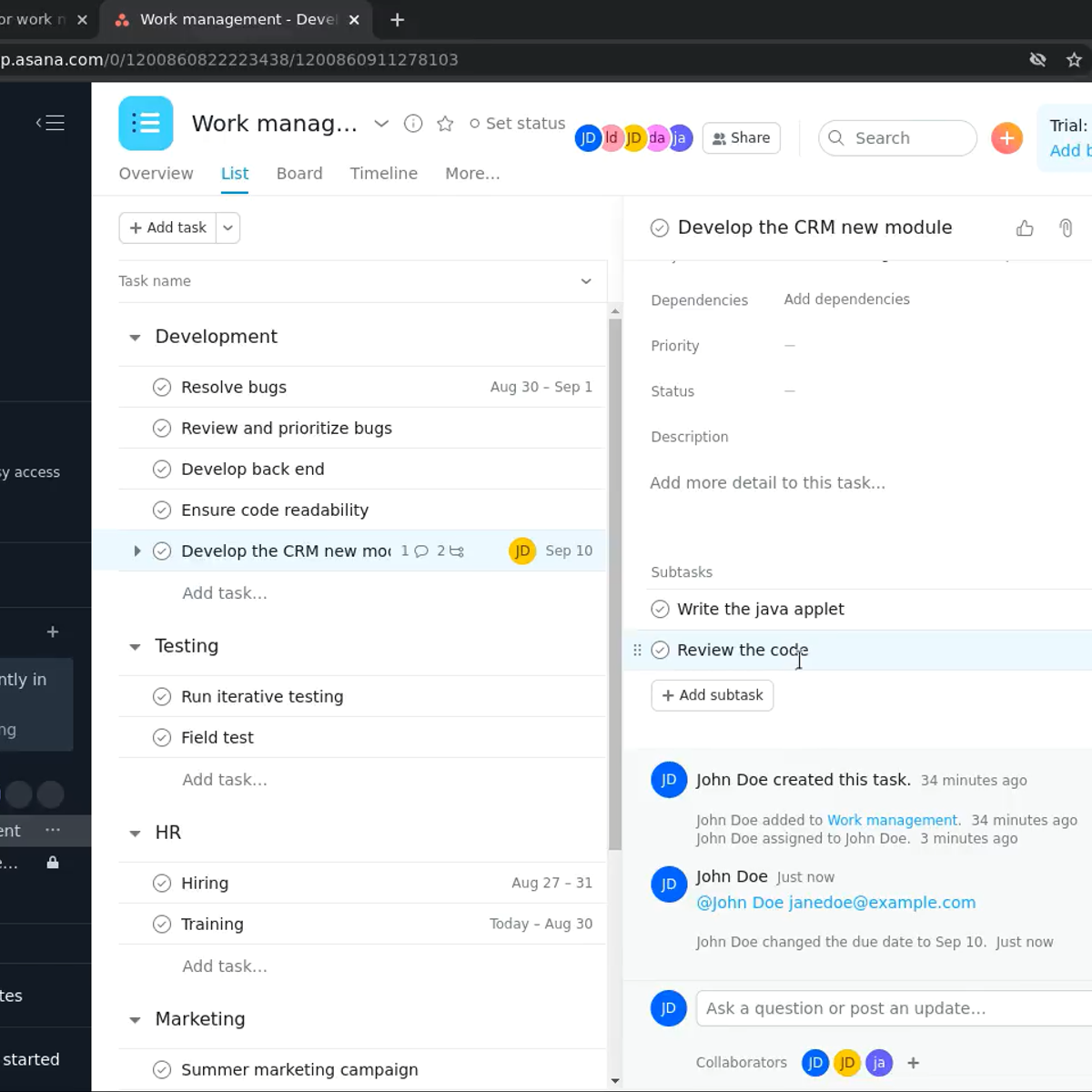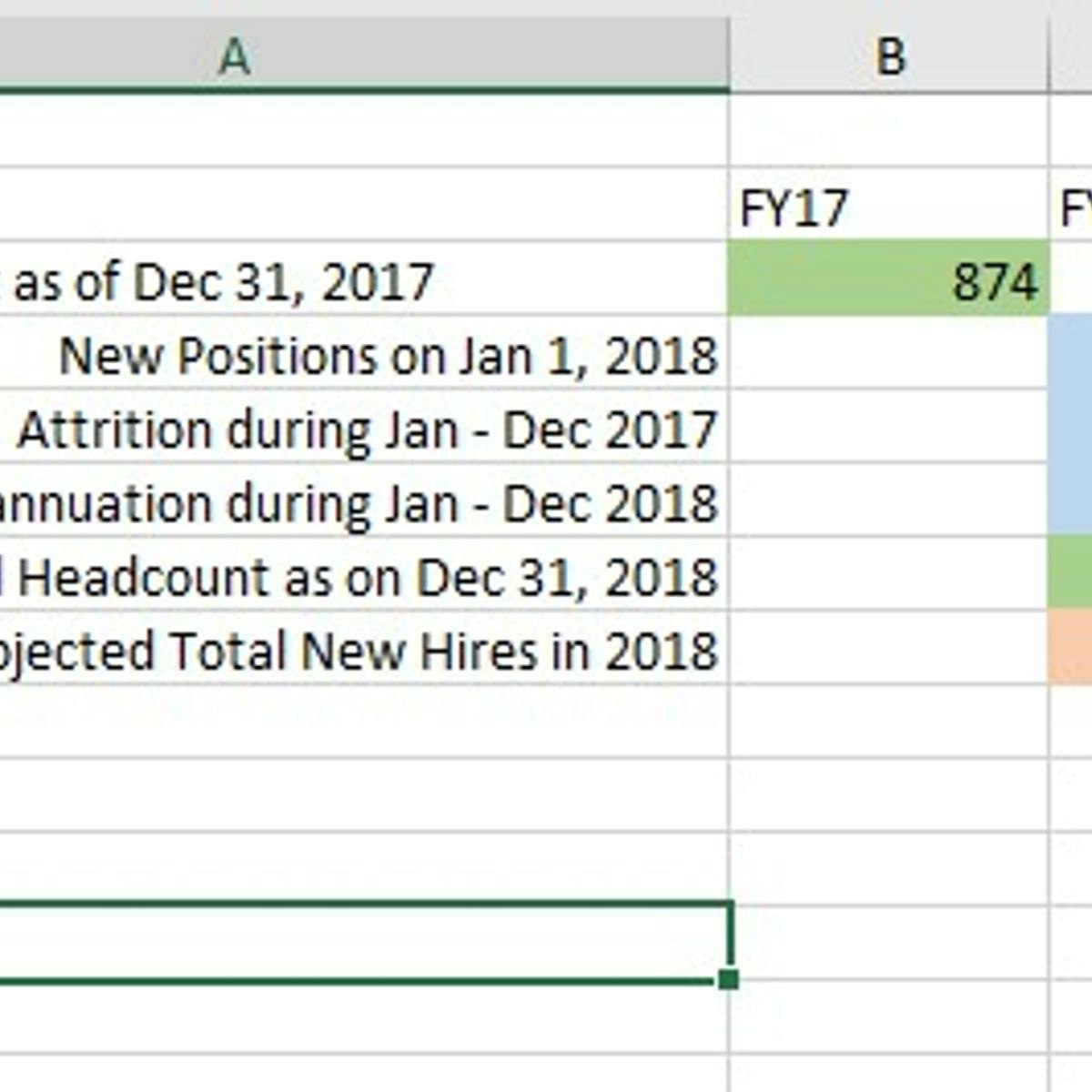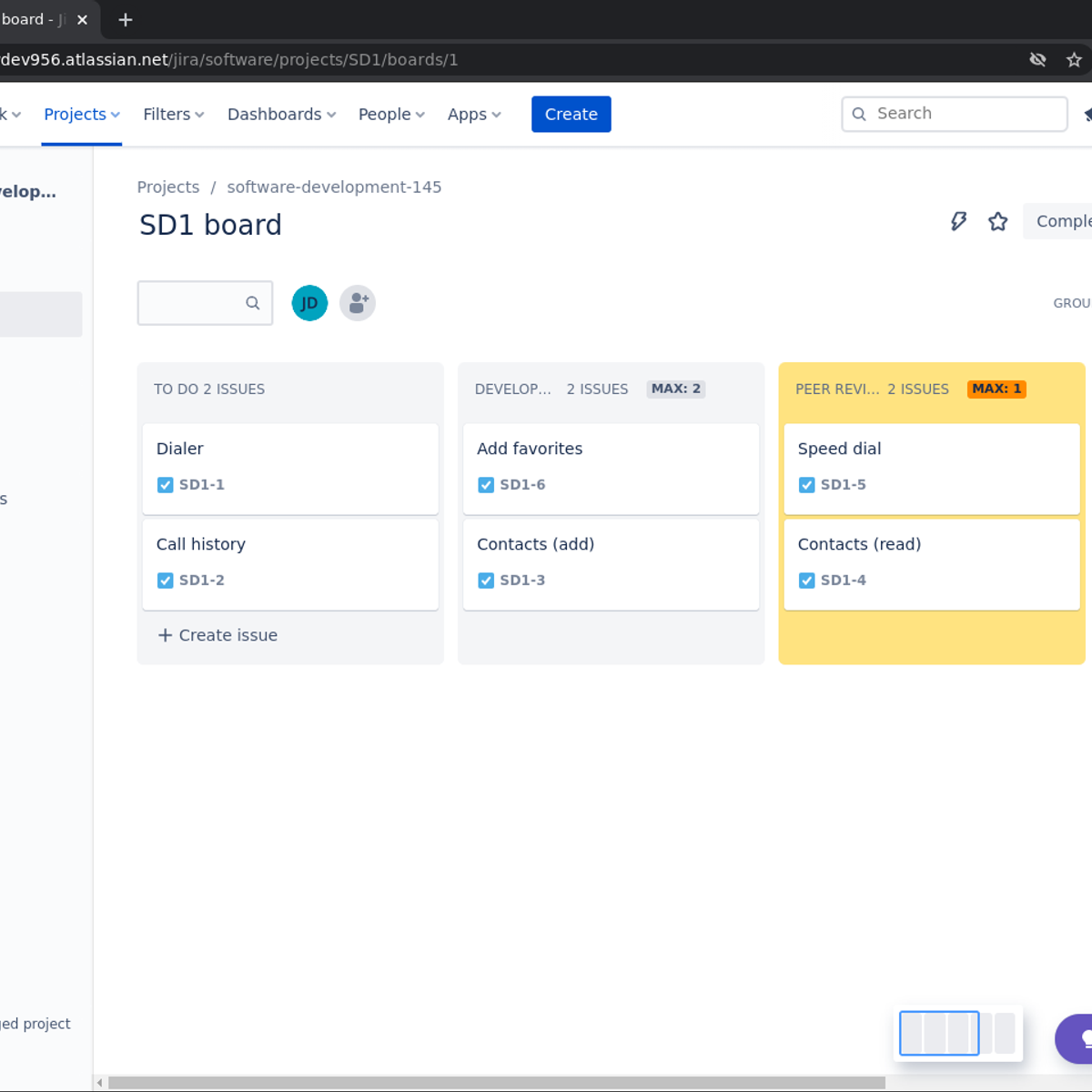Back to Courses









Business Strategy Courses - Page 26
Showing results 251-260 of 543

Use RACI charts for work management with Asana
In this guided project we will learn about cross-functional work management and RACI charts. We will use Asana managing tasks, subtasks and assignees to implement RACI charts and practices in work and project management.
Competitive Strategy
In this six-module course, you will learn how businesses and organizations behave in situations in which strategic decisions are interdependent, i.e. where my actions affect my competitors' profits and vice versa. Using the basic tools of game theory, we will analyse how businesses choose strategies to attain competitive advantage.
This course is also available in Chinese. Please go to our course catalog to access the Chinese version of Competitive Strategy.

Building a Hiring Plan by Analyzing Past Data in Sheets
By the end of this project, you will understand how HR analytics are used to perform several analyses such as analyze total headcount to be hired, consolidate the position details, provide insights that would help the Talent Acquisition Manager to arrive at the sourcing strategy, set the selection process and the assessment guidelines. All these analyses will help create an annual hiring plan for an organization. All these steps in the project are performed by individuals of the Human Resources team.

Trade & investment: evidence-based policies for development
This MOOC prepares students that want to analyse trade and investment policies of developing countries and emerging markets. We couch you for the task of giving evidence-based policy. For students interested in policy advise the course brings a sound understanding of what can and what cannot be done with well-established theories and state-of-the-art research. For students interested in research the asset of this course is to learn how to effectively communicate research findings in a policy setting.
Upon completion, you will have a good understanding of international trade and investment theories and recent developments in the world economy and their consequence on issues related to developing countries and emerging markets. You will be able to analyse the determinants of trade and investment, to measure the impact of trade and investment and to provide evidence-based policy advice that fits development strategies in emerging markets and developing economies.

Content Strategy for Professionals: Expanding Your Content’s Reach
In this, the third Content Strategy course, participants will learn actionable ways to grow internal and external audiences. They will deepen their understanding about those target individuals and will use a host of known and emerging tools and social networks to meaningfully reach them. As its name makes clear, this course will expand your content's impact and reach.
You will begin by learning how to utilize content trends to jump-start your organization's influence. You'll also look at how to engage with multi-channel digital communities across all social media. Finally, you'll hear about some of the best ways to enhance your content with new interactivity tools and gamification.
In this information age, every organization depends on its employees and those it serves to understand where it is going and what advances the organization has made. Content Strategy will enable you to tell your important stories with far greater impact and to a large, more valuable audience.
Guest lecturers in this course include:
-- Randy Hlavac, Lecturer, Medill, Northwestern (and lead professor of the Social Media Marketing Specialization also on Coursera)
-- Emily Withrow, Assistant Professor, Medill, Northwestern

Get started with Jira
In this project you will create your first project in Jira using a Kanban board for agile methodology, creating issues, epics and tasks, setting up WIP limits, building a roadmap sharing work with team members and managing the workflow with transitions.

Protecting Business Innovations via Trademark
Protecting Business Innovations Via Trademark
Watch Course Overview: https://youtu.be/mUja4iwbrTE
Intellectual property rights (IPR) has a great impact on innovation development and society. In Science, Engineering, and Business, we seek to create wealth through innovation in products, designs, manufacturing processes, and business systems or models. However, innovation leaders often FAIL to benefit from their discoveries and inventions when they are unable to adequately protect those innovations.
This course provides learners with an understanding of how trademark laws can be used to protect business innovation using a combination of lectures and case examples for discussion. The course focus on protecting innovations with Trademark as one of several tools that can be used by companies to protect their brands and products. In additional to learning about how trademark law works in theory, we will also discuss situations in which trademark might not be effective in protecting innovations, and will focus on the legal issues involved from a practical business perspective rather than from a purely legal viewpoint. This course is one part of a four course series focusing on protection of business innovations using copyright, patent, trademark and strategy, and these four courses may be taken in any order that is most beneficial to students interested in learning about protecting innovation.

Improve Business Performance with Microsoft Forms
Microsoft Forms can serve as a tool to help you survey both external and internal stakeholders as you work on improving your business performance. Business leaders can gain a 360 degree view of their business - or particular product or service line - through the use of surveys. By creating a strong objective first, a business leader can make a variety of surveys using the free, online program, Microsoft Forms, to gain insight from multiple stakeholders of their company.
Through the input from both internal employees and external customers, business leaders can make important decisions about how to move their company forward.
Follow this step-by-step guided project to discover how Microsoft Forms can be a strong tool to get this important business insight. First, learners will discover how to create a survey in Microsoft Forms by writing a strong objective. Next, learners will see how to create customer satisfaction surveys and employee satisfaction surveys and how each one serves different purposes in improving business performance. Then, learners will discover how to finalize and send the surveys before finally learning how to analyze the responses in a way that can lead to improved performance.

Technology Strategy: Creative Destruction
The success of modern companies depends critically on their ability to manage and respond to technological change. Innovation is continually challenging companies’ competitive advantages, giving rise to new business models, and stimulating new platform-based competition. Managers and entrepreneurs need to understand these strategic forces and how they impact firms and industries in the modern knowledge economy. This course explains how technological innovation affects the competitive dynamics of markets, and how managers and entrepreneurs alike can strategically manage these dynamics to maximize the likelihood of success.
Drawing on many years of research, this course teaches various tools, concepts, and analytical frameworks that help to characterize and analyze strategic problems arising from innovation and technological change. It also offers appropriate strategic responses that managers and entrepreneurs can implement to achieve market leadership for their companies. In a nutshell, this course seeks to help managers and entrepreneurs navigate through the “gales of creative destruction” (a term coined by the famous economist Joseph Schumpeter) unleashed by technological innovation.

Content Strategy for Professionals: Engaging Audiences
In this course, professionals at all levels of an organization will learn the best ways to engage an audience they want and need by smartly implementing their important, strategic stories and information and by using proven tools and techniques to enhance an audience’s experiences and interest.
Content Strategy is a conversation that provides thought-leadership. It starts a “conversation” with users and stakeholders inside and outside an organization. Conversations are the natural way people think about complex issues. Conversations also enable people to develop “stories,” which lead to understanding and helpful mental pictures. Content Strategy practitioners are at all levels of the best enterprises – in all departments and sectors from the top leader to the newcomer in the ranks.
In this complex information age, forward-thinking employees know that if they and their organizations are to thrive, they need to go beyond their job descriptions. They must master the most demanding communications frontier – creating engaging, strategic, honest stories and information that is valued by their most important audiences. In turn that will make their enterprise stand out.
Regardless of their area of work, position or expertise, Content Strategy practitioners know how to use words, pictures, video, and social and mobile media to interact with their most important constituents with trustable, actionable information that the audience values and will use. The strategic content they produce enhances the user’s lives and deepens their understanding and engagement with the organization.
Guest lecturers in this course include:
-- Rachel Davis Mersey, Associate Professor, Medill, Northwestern
-- Ed Malthouse, Theodore R. and Annie Laurie Sills Professor of Integrated Marketing Communications, Medill, Northwestern
-- Bobby Calder, Charles H. Kellstadt Professor of Marketing & Director of the Center for Cultural Marketing, Kellogg, Northwestern
-- Steven Duke, Associate Professor, Medill, Northwestern
-- Janice Castro, Assistant Professor Emerita, Medill, Nothwestern
Popular Internships and Jobs by Categories
Browse
© 2024 BoostGrad | All rights reserved


